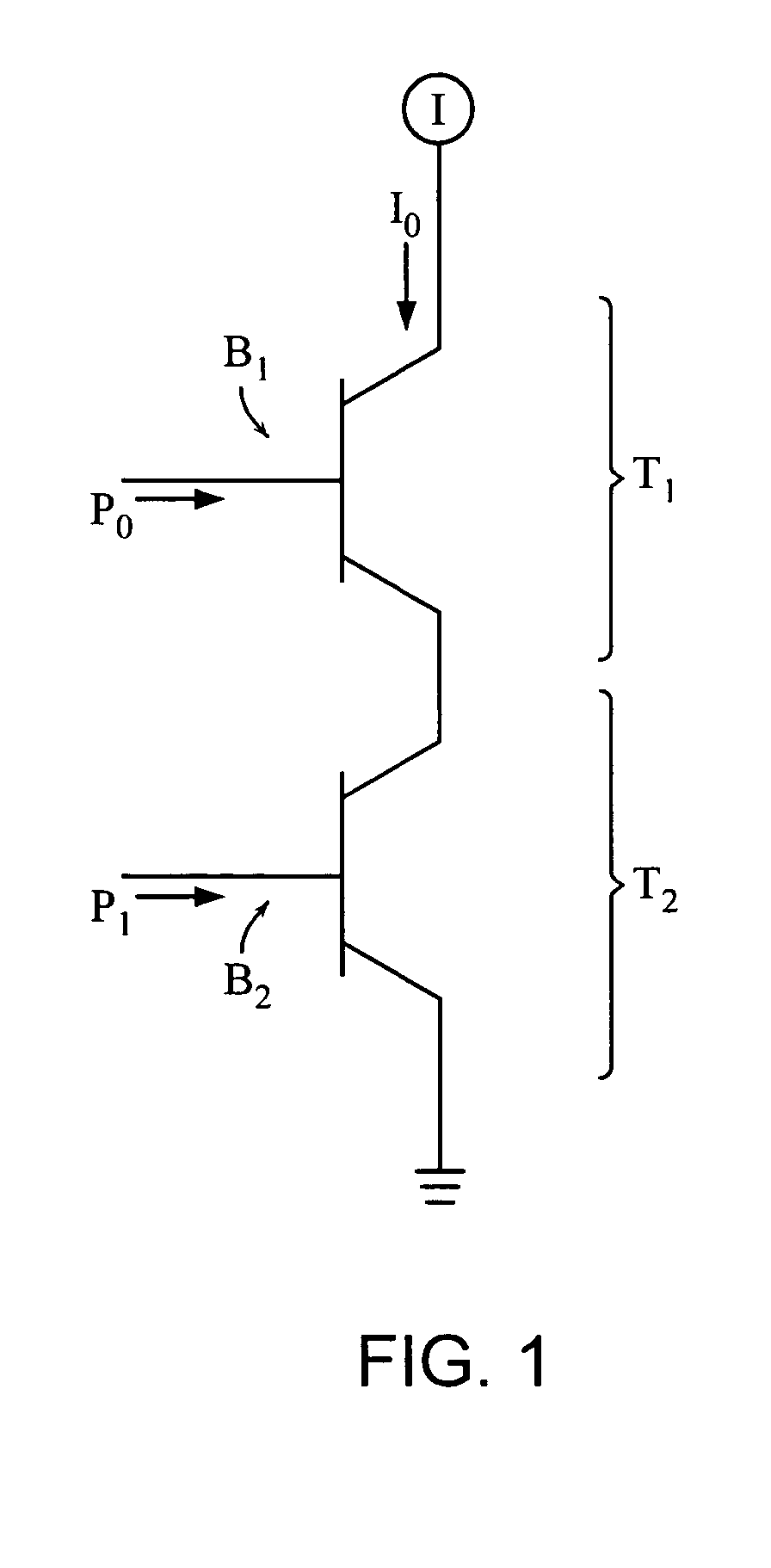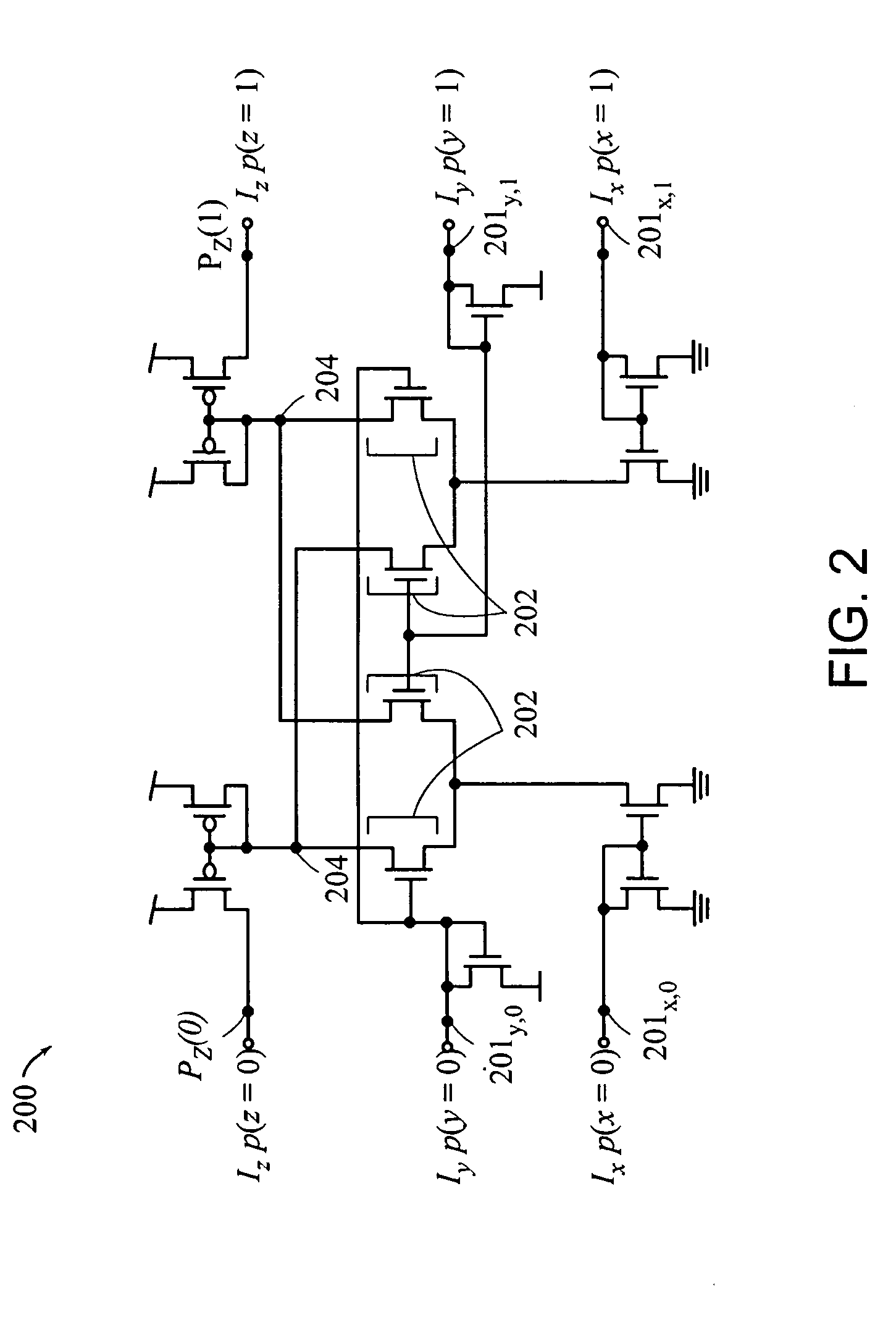Analog continuous time statistical processing
- Summary
- Abstract
- Description
- Claims
- Application Information
AI Technical Summary
Benefits of technology
Problems solved by technology
Method used
Image
Examples
Embodiment Construction
[0030]The sum-product algorithm (also known as the “belief propagation” algorithm) and its approximations (such as max-product) operate by message passing on a probabilistic graphical model (PGM). A growing number of statistical signal processing algorithms have been shown to be special cases of the sum-product algorithm on a particular PGM. Decoding algorithms, for example, can be described as Bayesian networks using sum-products. Sum product algorithms consist of a series of addition and / or multiplication steps.
[0031]Given a function with a discrete number of potential outcomes, a probability function P(X), where X denotes the set of possible outcomes {x1, . . . , xm} can be defined such that ΣP(X=xi)=1. The probability, therefore, that P(X=xi) (which can be denoted as Px(xi)) for each xi ranges from 0 to 1 (assuming non-negative probabilities). Such a function can be modeled in circuit form by representing probabilities as percentages of a maximum current Ix, i.e., Ix,i=IxPx(xi) ...
PUM
 Login to View More
Login to View More Abstract
Description
Claims
Application Information
 Login to View More
Login to View More - R&D
- Intellectual Property
- Life Sciences
- Materials
- Tech Scout
- Unparalleled Data Quality
- Higher Quality Content
- 60% Fewer Hallucinations
Browse by: Latest US Patents, China's latest patents, Technical Efficacy Thesaurus, Application Domain, Technology Topic, Popular Technical Reports.
© 2025 PatSnap. All rights reserved.Legal|Privacy policy|Modern Slavery Act Transparency Statement|Sitemap|About US| Contact US: help@patsnap.com



